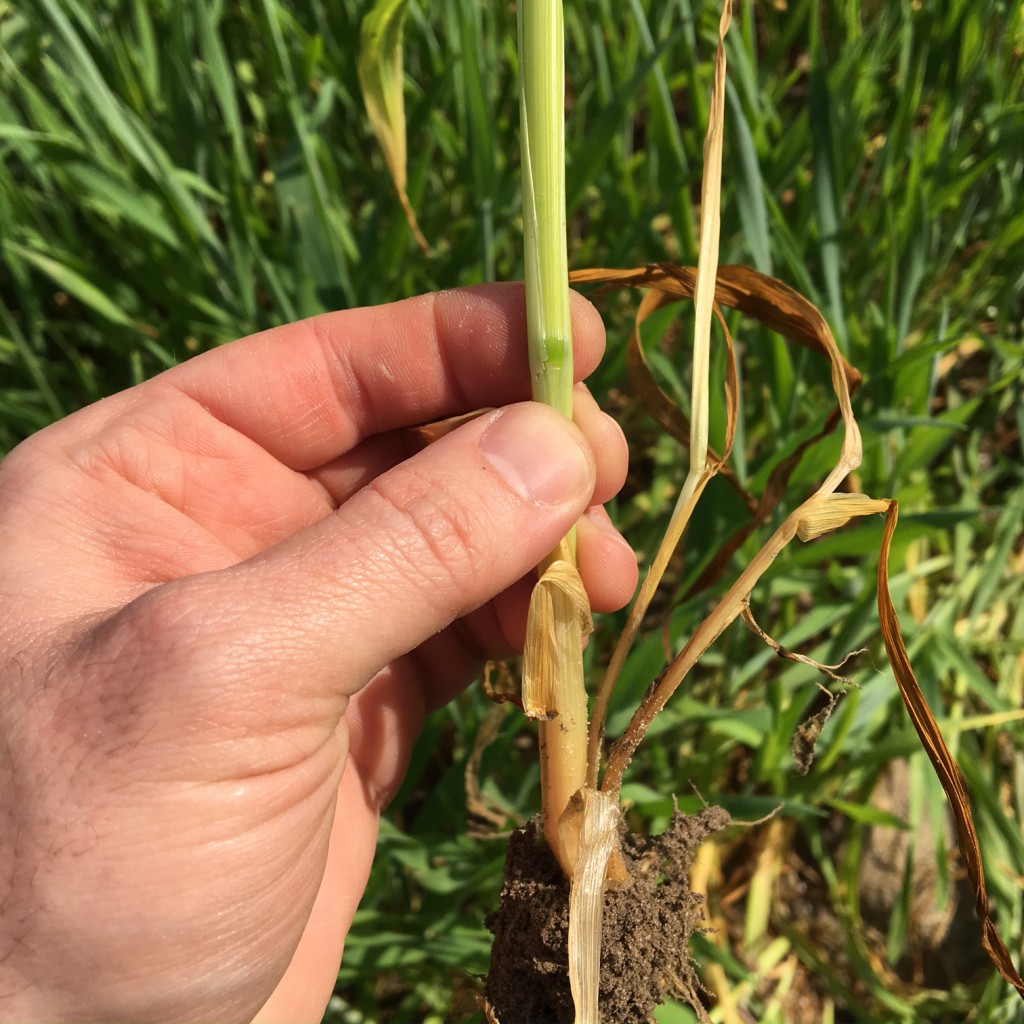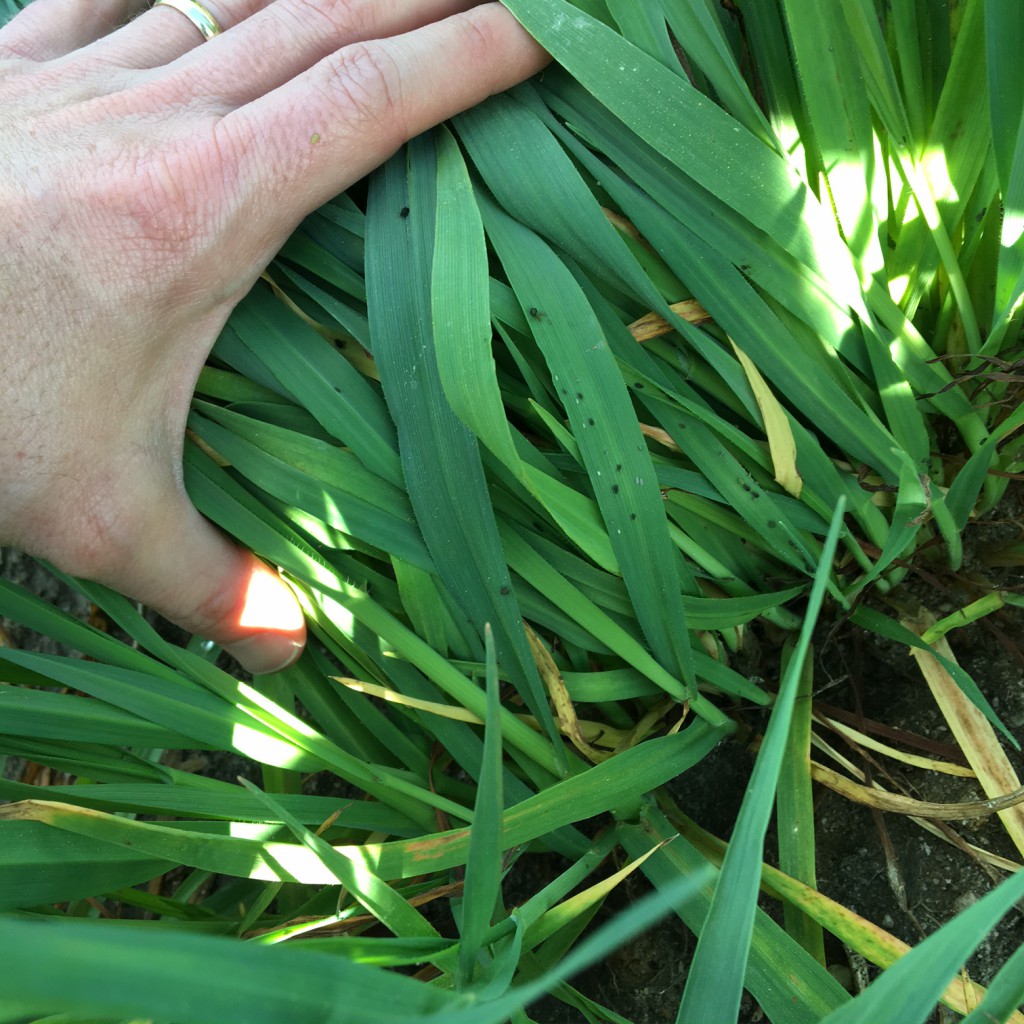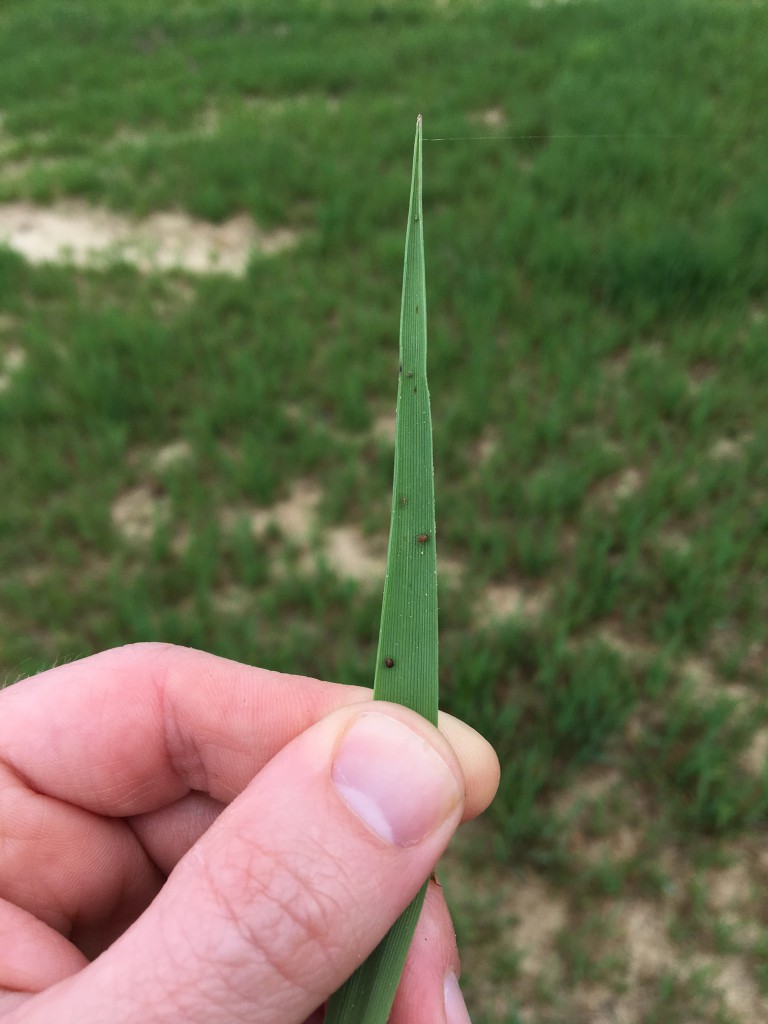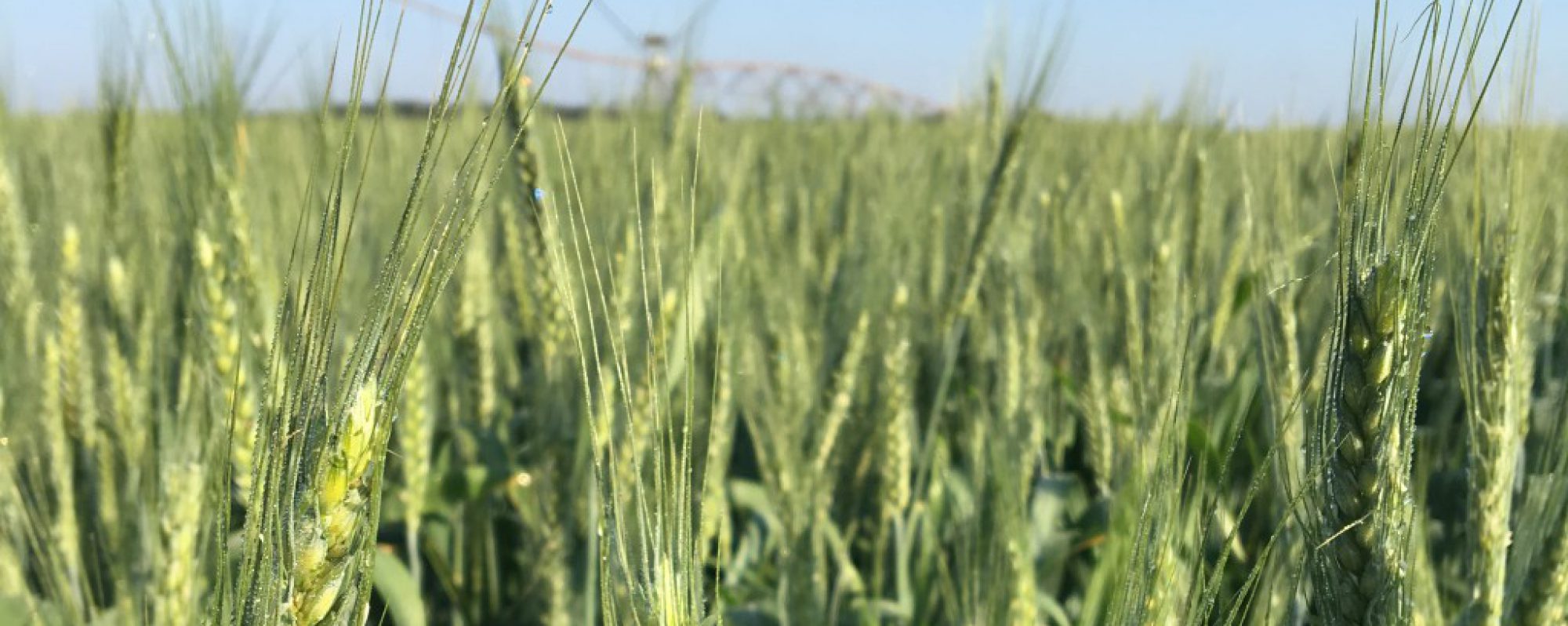
We almost got behind on sidedressing because of the rain, but we needed the rain. We were trying to decide if we should split our sidedressing or not. In many fields, we had good tillering anyway. In other fields, triticale and oats have “taken off” and UGA Grain Agronomist Dr. Regan Noland said to just go ahead and put out all sidedressing in this case.
My finger is touching the first node, which feels like a BB inside the stem. This starts the “stem elongation stage” where the flag leaf is moving through the plant up to right before the head comes out. This is the last we can use Harmony Extra, Express and Peak – all broadleaf herbicides if we have to, but most of our weed control is done now. I’m very pleased with how we’ve done with weed control so far, killing out raddish and other broadleafs.
I’m still seeing lots of aphids, mostly green-bug aphids. These aphids leave direct feeding damage that looks like purple specks on the leaves. The biggest issue from aphids is Barley Yellow Dwarf Virus (BYD). It’s more prominent on oats than other small grain, and I’ve seen a lot of it on oats in Southwest GA… but I haven’t seen it here, and everyone I talk to says it has not been an issue.

BYD can infect through heading, but the greatest losses are when plants are affected in the fall (seedling stage). It still may not hurt to treat for these aphids, especially when you can see aphid feeding while standing up in the field. But at this point, we focus on protecting the flag leaf.

